Blaca hermitage on the island of Brac is a hidden gem. It is a stone cave built as a part of the Croatian Glagolitic order. Once a place of solitude for the monks to dedicate themselves to God.
There is a beauty on Brac Island that extends past Croatia’s most unique beach. For me, the real beauty found in Bol is the not-to-be-missed site of the jaw-dropping Blaca hermitage, also referred to as the Blaca monastery or Pustinja Blaca in Croatian.
One of several hermitages on the island, the Blaca monastery is located on the southern side of Brač Island. It began in a stone cave where a couple of monks of the Croatian Glagolitic Order used it as a place of solitude to dedicate themselves to God.
The monastery in Blaca was, in 2007, thankfully added to the UNESCO World Heritage Tentative List. For one, I can see why; what I can’t see is how it hadn’t made a list sooner! It’s a real inspiration; no words on a page can give you a real sense of this cultural attraction.
Way back in the early part of the 16th century, two Glagolitic monks fled to Brač to escape the Turks and found shelter in Bol and were offered the cave as protection. After receiving the certificate of ownership, the founding Monks established the monastery of Blaca and built a church surrounding the cave.
The monastery was in use for over 400 years. During that time, the monks and workers cultivated the cave area, forming an intensely spiritual place and using the hermitage as a farm, school, and private astronomical observatory for many years.
Skip Ahead To My Advice Here!
Hvar Monastic Community
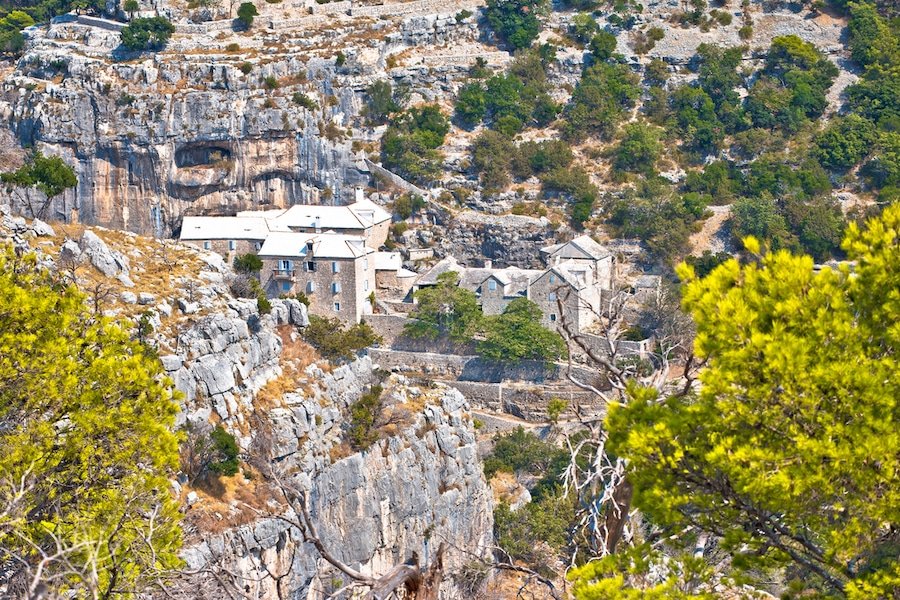
The Monks produced many thousands of liters of wine, had hundreds of olive trees, and pressed the oil. Sheep, oxen, and mules, and more than 230 unique stone-carved beehives were onsite, making 3,000 kilos of delicious sticky honey each year. The farm’s harvest was used to trade for the goods required at the monastery.
After you walk along the path to reach the Blaca hermitage, you’ll need to take a short break and rest your legs as you catch your breath. If you can, pay the small fee to be taken on a tour of the once-thriving hermitage. Your guide will be one of two brothers who maintain Blaca, now a museum. Easily one of the most unique museums in Croatia, Blaca is a national treasure.
Stepping up into the stone layers that form doorways, paths, and a huge open-plan stone kitchen, you’ll be in awe of just how the generation of monks who lived in Blaca, along with the workers, maintained their lives there. An old mill carved from stone still stands. You can do as we did and be reminded of how milling flour once took many labor-intensive hours.
Brands We Use And Trust
My Guided Tour Through Blaca Hermitage On Hvar
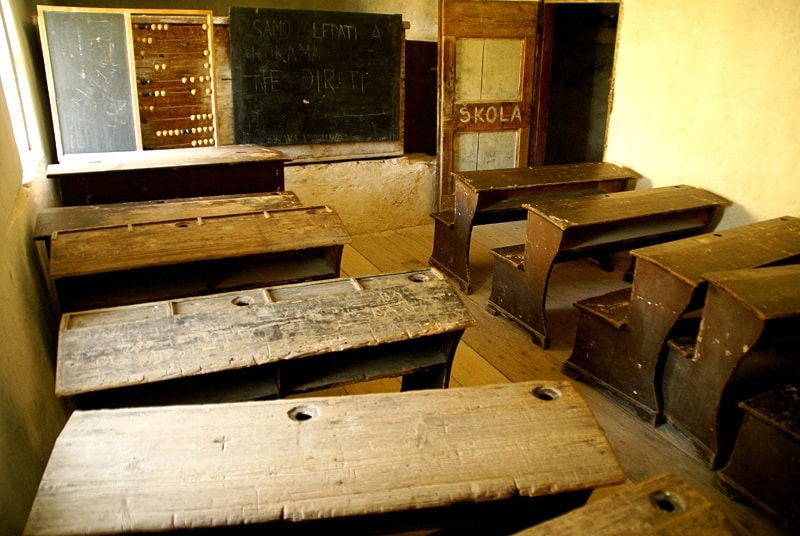
Our guide took us into a small room, complete with wooden desks and a giant wooden abacus;
Here is the school my father went to, he smiled. My father walked over three kilometers to this school carrying wood as payment each day.
I shook my head in disbelief that small children needed to walk this far to school and back again carrying wood just 50 years ago. I so desperately wanted to take a million photographs, but taking any photos of Blaca is prohibited.
Father Niko Miličević, a well-known astronomer, became the last monk to reside in the Blaca hermitage after his passing in 1963, but not before he and the Monks before him collected dozens of eye-opening artifacts. A large number of clocks and 8,000 books in the monastic library are 400 years old & many are written in Glagolitic script.
Along your tour of Blaca, you’ll see paintings, grand walnut furniture, a printing press from 1894, which took one year to produce a book, and various other objects, which were all acquired using payment in the form of wine, olive oil, and honey.
Each item was shipped to Blaca via boats from Italy and Vienna and was carried up the mountainside by workers. The two biggest pieces in the collection are a telescope acquired after the monks traded a year’s worth of farm produce to a trader in Venice. The second is a 400-kilo piano.
Weighing 400 kilograms, the piano was carried up the two-and-a-half-kilometer steep mountainside by the hermitage workers. Locals say that the men drank 56 liters of wine along the way to quench their thirst and give them the boost they needed to make it up the steep hill.
If a piano and telescope are not enough to excite you, be sure to visit the armory room, where a rich collection of weapons is on display.
How To Get To The Blaca Hermitage On Brač Island
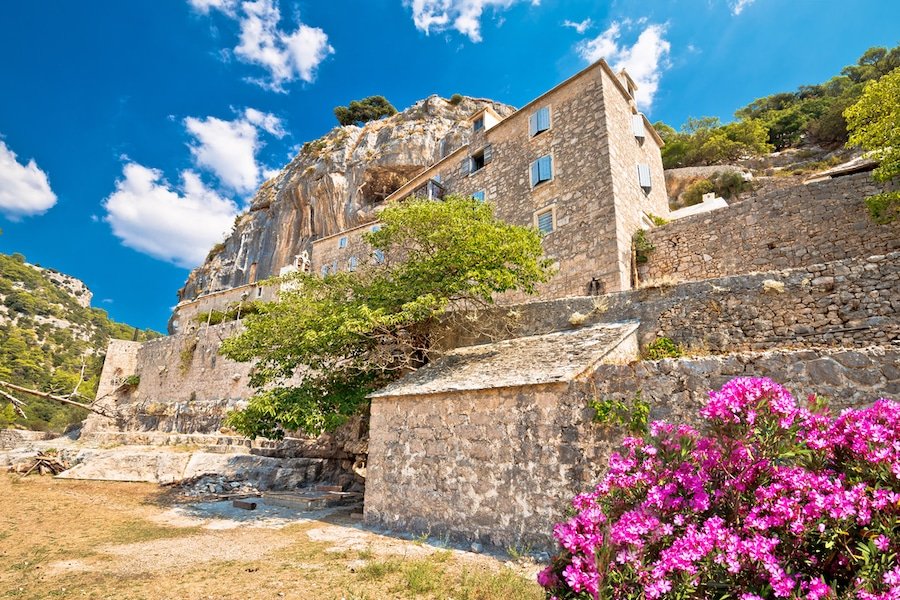
The hermitage is accessible in several ways.
Blaca by car
One option is to take a car up to Dragovoda; once parked, you will need to take a short hike there and back (20 to 40 minutes each way) to reach the entrance to Blaca.
Hike To Blace
The second option is to take the walking trail from the port (tours are easily found); it’s a steep hike and should only be attempted by those who are fit and without small children. Either way, be sure to wear enclosed footwear on your walk and pack lots of water, as it can get sweltering.
Open Tuesday – Sunday 8 am – 5 pm
Accommodation In Bol Croatia
There are several accommodation options in Bol Croatia. Including private apartments and family-run hotels, your choice should be the Bluesun Hotel Elaphusa, where we enjoyed four-star luxury with views of Zlatni Rat and the Island of Hvar.
Hotel Elaphusa can arrange tours to Blaca and all of the local sites for you. Hotel Elaphusa is modern and provides exceptional service. It also has one of the largest wellness centers in Croatia, offering unique olive oil treatments.
FAQs
Where is the Blaca Hermitage located?
The Blaca Hermitage is located on the southern side of the island of Brač, near the town of Bol in Croatia.
How can I reach the Blaca Hermitage?
You can reach the Blaca Hermitage by car or by hiking from the town of Bol on the island of Brač.
What is the history of the Blaca Hermitage?
The Blaca Hermitage was founded in 1551 when two Glagolitic priests sought refuge on the island of Brač. It grew into a significant settlement and played a crucial role in the island’s history.
What makes the Blaca Hermitage unique?
The Blaca Hermitage is unique due to its location on a rocky cliff overlooking the Adriatic Sea and its rich history as a hermitage established by priests seeking refuge.
What can I see at the Blaca Hermitage?
At the Blaca Hermitage, you can explore the hermitage complex, including a school, living quarters, and a museum displaying the lifestyle of the former Monks.
Is the Blaca Hermitage known for any specific historical facts or achievements?
Yes, the Blaca Hermitage is well-known for its astronomical heritage. The hermits were also astronomers, and a telescope from Blaca has remained one of the oldest ones in Croatia.
Can visitors explore the surrounding area of the Blaca Hermitage?
Yes, visitors can explore the surrounding area of the Blaca Hermitage, including the rugged landscape, and Vidova Gora that has stunning views of the Adriatic Sea.
Have you ever been to the Blaca Monastery or the island of Brač?

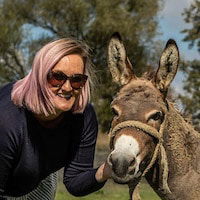
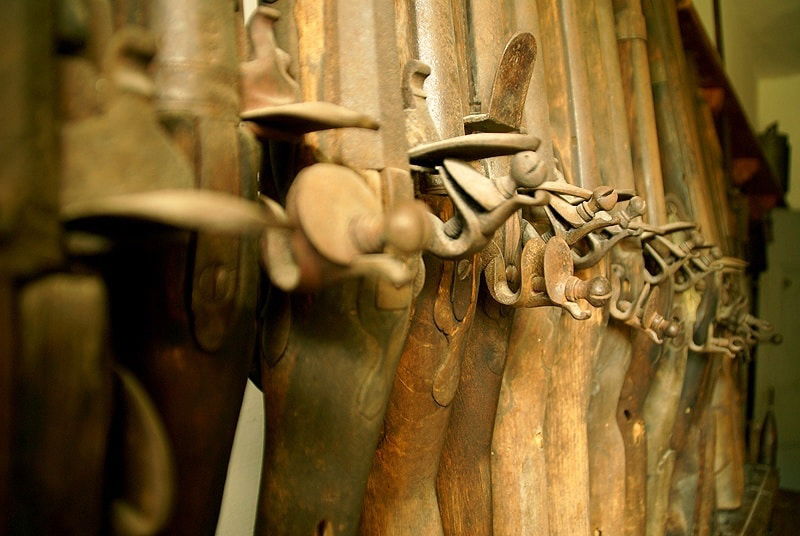
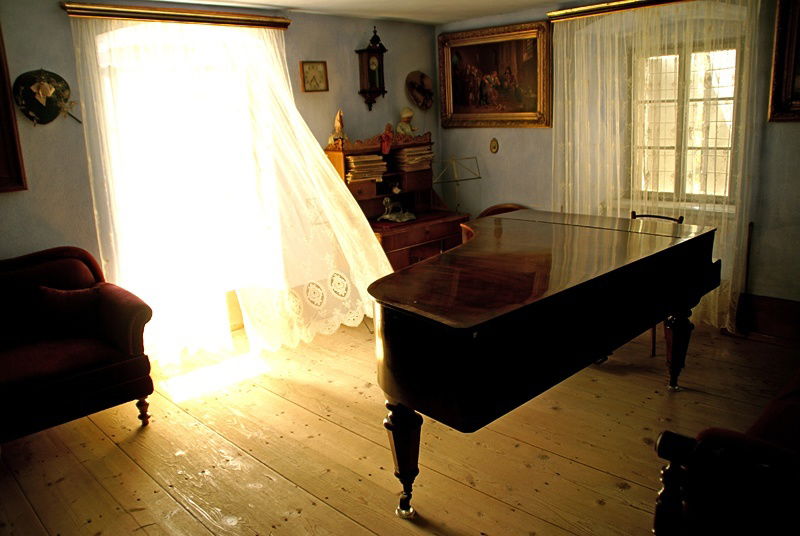
Jaw dropping is right! Looks like a fun an interesting way to spend the day!
Wow, this is awesome. I’d love to wander around in there!
You can’t do much better for a tour guide than one of those brothers. The personal connection to a place really adds to the experience. I’d really enjoy seeing this hermitage and hope I get the chance to return to Croatia soon. Thank you for sharing it!
Incredible place. I have visited a similar monastery in Turkey and loved the experience, I would definitely love to see Blaca!
Wow, this looks incredible. I spent a lot of time guiding tours of Meteora in Greece last year and could not believe how much effort must go into creating these places, without all the modern technology we take for granted today. Hope it gets on the World Heritage list soon, looks like it is definitely worthy!
That place sounds fascinating. What an incredible history. I was grumbling about wheeling around my heavy suitcase and having to carry it up a few stairs today, so I cannot even imagine carrying a piano uphill that far.
Stunning. It kind of reminds me a little of Montserrat outside of Barcelona, Spain :)
So I think I did it! I hope the internet doesn’t break lmao! God do I love the site of Croatia. I really need to spend some time there. I say that about a lot of places… I hope you’re not leaving too soon!
What an amazing place!! I LOVE historic sites and such a great story how it was founded. I understand respect, but not allowing photos makes my heart cry. Thank you for sharing such a wonderful place!
Such a unique place indeed. I love reading about these kinds of spots that don’t make the ‘above the fold’ section of travel recommendations for any given spot.
The bit about the school reminded me of all the stories my grandma told me when I didnt want to get up for school in the morning: “in our days we considered it a privilege to walk every morning 5 miles, barefoot, in the snow, uphill.” Etc.
It’s the green door! (It’s the same one, right?)
Looks like a fascinating site, very full of history and gorgeous to look at.
Thanks for another Sunday Traveller, too. A few new posts to check out!
I love visiting old sites like this!! It’s too bad that you weren’t able to take any pictures (It drives me crazy too when I can’t take pictures of beautiful places!), but without the distraction of a camera, you can be fully in the moment!
Ain’t that the truth! I did enjoy that aspect of the tour.
Beautiful! Pretty incredible the amount of manual labour that goes into building something like this.
I love old monasteries!! This is such a stunning location, I want to add it to my itinerary!
I’d love to visit this! Wow what a view too. Too bad pictures are prohibited though but I guess it’s for a good reason
How gorgeous! I love how it is only accessible by a walking path even today. Makes it all the more special!
Amazing photos SJ!! Looks like a very lovely place to live!!! :D
Looks like an amazing place to visit! I really have to come to Croatia very soon!
Will visit this place in June. B-)
Be sure to take the tour up, its amazing.
Is that where Zlatni Rat is – on Brac? I want to go there!
Da, da :)